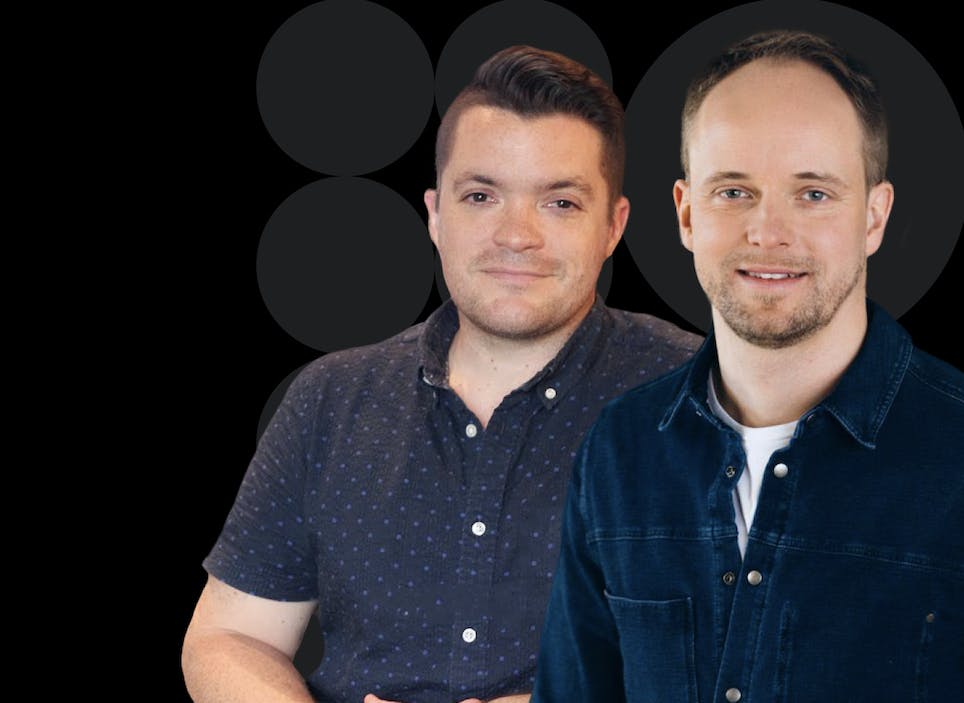Dana is an LA-based Grammy-nominated mixing, audio engineer, record producer, composer and saxophonist. He has worked with a wide range of artists including Metallica, Rihanna, The Avett Brothers, Bob Dylan, Adele, Neil Diamond, Slayer, Weezer, Post Malone and more. In 2006 Dana mixed the full-length, limited edition of Neil Diamond’s 12 Songs album and in 2008 Dana mixed Neil Diamond’s #1 selling album, Home Before Dark. We sat down with Dana to learn more about his career, experience of building a home studio, and future aspirations. Watch and read the full interview below.
Martins Popelis: Why don’t you start by telling us a little bit about yourself? How did you get into music? And what stuff you have been working on?
Dana Nielsen: I’m originally and still am a saxophone player. That’s my main instrument. I grew up playing piano and then switched to saxophone in 4th grade and took that all the way through college, where I was a jazz major at Loyola University. My wife went there as well. She’s a singer. We’re high school sweethearts. In college, I started doing work in the studio. I became the teacher assistant, and got my own set of keys where I would run labs for the other students and also run my own sessions all night long and really cut my teeth there and realized how much I love being in the studio. Honestly, I grew up wanting to be an astronaut, and music was my thing on the side.
Martins Popelis: That career took quite the turn there.
Dana Nielsen: It did. As I was getting a C in advanced physics as a freshman, I realized maybe I should focus on the music part more. Full circle, once I found the studio and how much I loved that, it was like it became my own little spaceship in there. The engineering side, the technical side, the math, the physics, the acoustics, and best of all, the sound, that all came full circle. I still play saxophone and write a lot of music and perform when I can. I really started focusing on being a producer, a mixer, and an engineer.
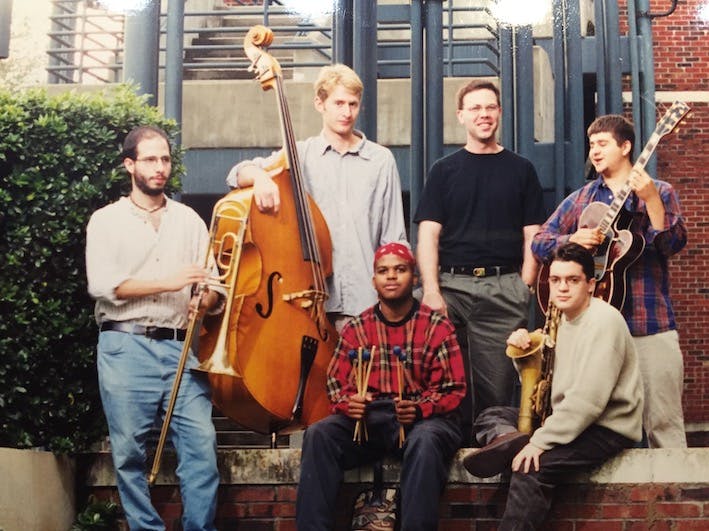
Martins Popelis: The saxophone is a little less than half of your reality and personality, and the studio has now grown to be a bigger part, right?
Dana Nielsen: Yeah. Honestly, it became really clear right away in the studio, even in college, that now if I’m useful to artists in the studio, I’m still using my ears and I’m still part of the music. I don’t have to ask this country band that I love, “Can I play a sax solo on your song?” – or this rap group or rock group – all this diversified taste that we all have. Being in the studio suddenly, it felt like I can work on all of it. Growing up in the ’80s when saxophones were on everything, it seemed like the perfect instrument. By the time I’m in college in the mid to late ’90s, it was like – there’s not much saxophone anywhere unless you’re playing bebop in New York, which I love – but slim chances of me really dominating that space. When I got in the studio with these different artists, even jazz artists, it just was liberating to dive into the technical component and listen to a ton of different music and have helpful opinions about it when I can, and not always have to be performing. I feel like now, 20 years since then, I have a nice balance of playing, performing, and plenty of behind-the-glass type of stuff.
Martins Popelis: You can also very much, I would assume, relate to the musicians that you’re working with, right?
Dana Nielsen: Yes. That’s been very helpful my whole career, being an engineer who is a musician, to not be obnoxious, but to help translate when needed. It’s fun.
Martins Popelis: What cool projects have you been working on in your career? What comes up as highlights?
Dana Nielsen: There have been so many. I do a lot of work with Rick Rubin, who always has a million amazing artists around. It’s been an incredible time working with him and rubbing shoulders with so many legends and heroes of mine. Working with Bob Dylan on his Tempest album was completely crazy, in a wonderful way, like surreal crazy – eating lunch together every day and calling him Bob and looking through Electronic Musician Magazine together, just random stuff. Let’s see. My wife and I just worked on the new Post Malone album.
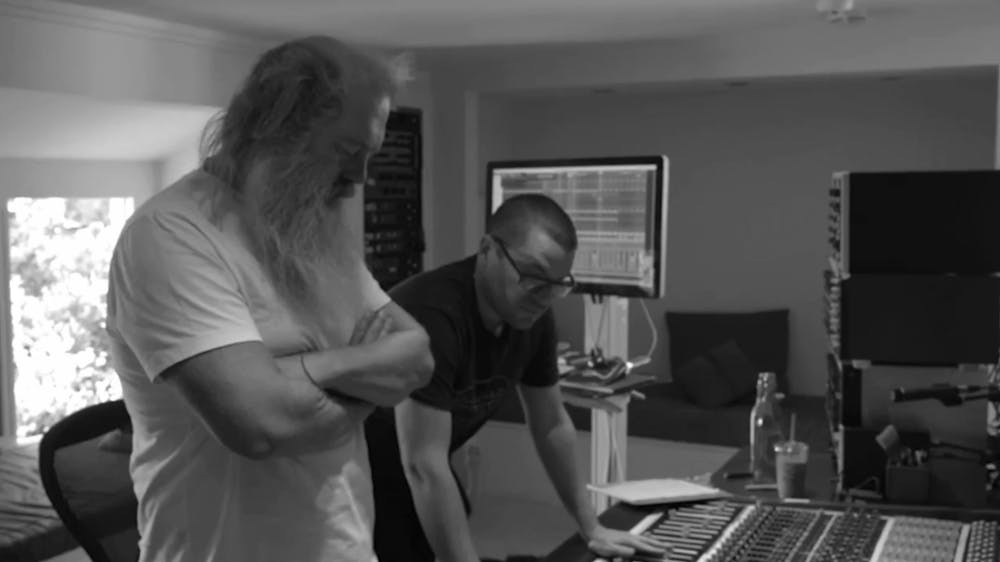
Martins Popelis: Wow. That should be nice.
Dana Nielsen: Which is really exciting. We get to do a lot of collaborative work. She’s a vocal contractor and singer. She’s often tasked with putting together groups of singers to work on projects. We’ve both done a lot of work with Republic Records and various artists on their roster. She got a call about this gig, and oh by the way, it’s Post Malone. We’re just both like whoa, crazy. That just came out, so that feels really exciting. Working with Neil Young – I get to work with a lot of actors as well in the film score world that I work in – working with Will Ferrell a bunch and Kristen Wiig.
Martins Popelis: You seem to be working all across the genres, from Bob Dylan to Post Malone.
Dana Nielsen: Yeah. I did a Slayer album.
Martins Popelis: It’s a wide dynamic range, creatively speaking.
Dana Nielsen: Honestly, that’s what I mean about the studio, how I love all of these different styles of music. That’s one of my favorite bits is being able to jump from different genres. I love that.
Martins Popelis: About your studio – you have an awesome room here that’s super nice. Did you design and build it yourself?
Dana Nielsen: No.
Martins Popelis: How did you come to have such a wonderful place?
Dana Nielsen: Actually, it was I think while I was working on that Slayer album. Carissa, my wife, was doing house hunting. We were looking to move from Santa Monica to Culver City, where we’re at, have a bit more space. At the time, my studio in Santa Monica was also in our house. I’ve always had a home studio. I’ve always done all of my mixing from the home studio, even when the previous one was about the size of this carpeted space. It was a five-by-five, small extra bedroom.
Moving here to this space, which is four times the size of that room, Carissa was house hunting, saw this room, and was right away like, “Oh, Dana’s going to want this for the studio.” Obviously, it’s supposed to be a master bedroom. She is amazing for donating it to our larger studio needs. It was like this when we moved in about 12 or 13 years ago and loved the open A-frame. We immediately contacted our friends, Jacques Lacroix and Vincent Van Haaff, who came in and checked out the space and designed their signature shovel, which is what they call this piece here. We worked on these polys on the sides and this back wall. There’s actually another modular piece that for years was fit in the window there. At some point, I thought, let me just see if I can get that window back.
It didn’t really, to me, in any way affect the mixing sound. Then similarly, I kept using this fold-open closet for vocals. Just like I’ve done in lots of home studio installations with Rick – constantly making makeshift acoustic spaces. One of the tricks that is very common for drums, you build this gobos behind, and then you can put two-by-fours over those gobos and drape a lot of packing blankets and things like that so you still get some reflections and room going out this way, but all of this stuff, the reflections are really damp.
Martins Popelis: Let’s talk about sound. How important is a good quality of sound for you when you do your work?
Dana Nielsen: On one hand, my work is sound, and I love it. I’m always striving for the best sound, even when to me sometimes the best sound is degraded on purpose. That’s a lot of fun. I love the sound. I live for sound. That’s not to say I poo-poo things that sound funky. The other thing I always say, don’t be snobby. I’ve worked on so many of these high-level albums where there’s rental budget and there’s food budget and there are setup days or setup days upon days and pre-production – and get whatever is needed to capture this in the most fidelic and comfortable for the musicians type of way – to then switch to working in TV and advertising.
Carissa and I do a lot of music for ads and work with a group of composers to do a lot of music for that. That stuff, once I started working with them, 10 or 12 or 15 years ago, their process is really fast. They would hire me to record and mix and just be like, “Dana, are you done with drum sounds? It’s been 10 minutes. What’s taking you so long?”
This would be half a day or a day. It took a while to shed that skin, just because I had to, because I was hired by them and this was the job and this is how they do things – like, “Okay, I guess. I haven’t checked the phase on these things. There’s only a 57 as an overhead. Oh, it’s fine.” I’m used to, in the bigger album experience, setting up drums, having a setup day, working on sounds for even just the drums for many hours. In the ad space and music for a tight turnaround, that’s just impossible. It took a while to roll with that. At first, I had to – and begrudgingly, “Okay, I can’t vouch for these sounds.” Then come to find out those are some of the best sounds. You’re under pressure. You got subpar equipment like maybe the 421 that’s got the grill knocked off. It’s duct-taped onto the stand. What’s the use in being like, “I can’t work in these conditions. Where’s my 251?”
Through all of those times and discovering what fun it is to work with limitations and for sake of speed and creativity, it’s really been eye-opening over the years. It’s not only taught me
you don’t need the best of the best gear to get amazing results.
Dana Nielsen
It’s certainly fun and helpful, but you definitely don’t. It’s also encouraged creativity and trying different mics on different things. It’s also increased my speed and efficiency in those bigger budget album places, because there are definitely times where you think you have a day to set up, and all of sudden it’s like, “Hey, the artist landed today, and they want to come in,” and blah blah blah. Like, “Okay, yeah, no worries.”
I can sit here and tinker with stuff until the cows come home if I know we’ve got a day to set up, but we’re already ready. A lot of my work in the bigger album space is meticulous setup and sometimes practicing moves, like, “Okay, we’ve maxed out the tie lines. We’ve maxed out the console. We want to have not just the grand piano, but we’ve got an upright, we’ve got a tack piano, and we’ve got a grand out in the living room. How are we going to facilitate this? We’re going to switch the console from mic to line. We’ll use these external pres. We’ve got lines around here. If I say go, let’s practice this. You guys pull those patches, put it into here, whatever. That’s cool. That works.”
Somebody once compared it to a military drill or something, like just being so ready when the talent arrives.
Martins Popelis: It’s like changing the Formula 1 tires.
Dana Nielsen: Yeah, it’s like that type of stuff. Of course, it’s lower stakes certainly than the military. Like we like to say, there’s no such thing as a music emergency. We all feel like there is, but it’s just music.
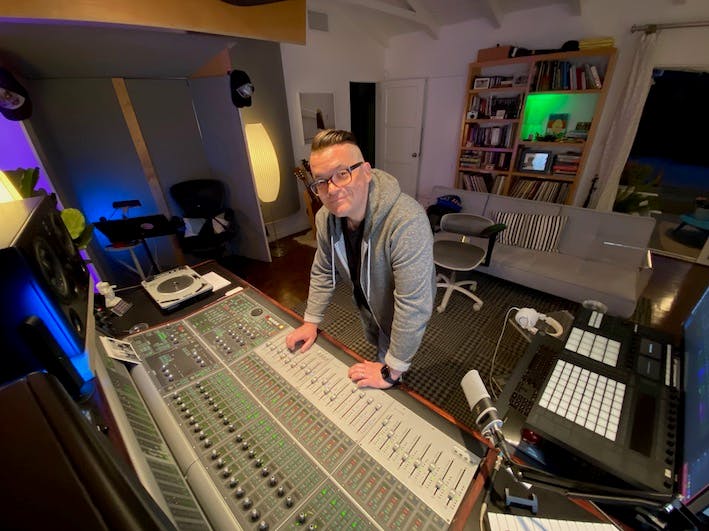
Martins Popelis: For you then, having here these very nice ATCs with SoundID Reference calibration, what difference does that bring to you compared to when you had a studio the size of your carpet and let’s say a pair of KRKs?
Dana Nielsen: On one hand,
this type of setup with ATCs and SoundID Reference allows me to be very accurate and to correct room reflections, to save time in the long run with fewer fixes going to the car or other systems.
Dana Nielsen
I can hear an extended low-end and top-end. There’s more information I can work with to make decisions. In the same kind of don’t be the snobby type of ethos, when I was in that five-by-five carpeted square box and working on these five-inch Yamahas, I still believe – much in the same way people love NS-10s. I think that 90% of the work is done in that small pocket that most speakers can do. Whether or not they’re flat is another story. That mid-range energy is really what’s going to help translate across a lot of stuff. To that end, I still work on these tiny, tiny, little, realistic powered speakers.
Martins Popelis: You even work on them, or you just mix on them?
Dana Nielsen: I work on them. Constantly, because I can really find the power of a mix in those. Here, there’s power for days. It’s built into the system. It’s easy to crank up and be blown away and washed over by sound and stereo image and deep bass and sparkly highs and think that you’re getting an accurate picture in that meaty mid-range area. On something like here or on a cellphone speaker or a computer, which is why I’m excited about the new stuff in SoundID Reference where you can simulate those sounds, that’s critical, because all of that simulation has to do with that little pocket, that main 90% pocket of energy that has to translate.
I look at – and I’m guilty of it too occasionally. I’ll look at TikTok videos of people making songs or demoing a plugin. It’s on a bass patch or something. Bro, you can’t hear anything you’re doing on this phone. This defeats the purpose. That’s what stuff like those speakers will do. It’s in those areas that you can’t hear that you still need to hear them, psychoacoustically or put some harmonic stuff on there to get it up into the listenable audible range on a small speaker like that. I also keep them deliberately closed to mono. They’re away from me. You get a number of things. You get this listening from another room perspective, which is – we all have had that experience, and it’s always revealing. You put on a song that you’ve made and you go in the other room and you’re like, “Oh my gosh, I didn’t realize it sounded like that,” or, “That’s way too loud,” or whatever.
Having them away from me is really helpful. Having them pushed together is really helpful, because I’m not transfixed by this stereo image in any stereo stuff I’m doing. Then just the fact that they have such a limited bandwidth is really helpful. What my goal is is working on those. I’ll always start here. I’ll crank it up. I leave myself plenty of headroom in Pro Tools so that I can ride faders and really just feel inspired – and leaving the low-end and the fixed room acoustics and all that stuff. It’s fun. It’s just pure inspiration. Then when I feel like I have a cool balance going, and maybe even a little bit of automation, then I’ll move over there. I live there for a while and make the most banging – on these little speakers, make the most slamming, compelling mix I can – or if it’s not a slamming style music, just make it feel full top to bottom on those.
Then my goal is to – then I pop over to the main system, and it’s immediately revealing. It should, when it’s done, feel like this is just a bigger, louder version of that. Invariably, what happens is you do all this work to get the low-end cranking on the little speakers, and then you come over here and it’s way out of control on those subs. Then it’s just like, okay, I know this is how I want it to sound on the little speakers and ear pods and phones and all that stuff. Now all I got to do is correct it on here.
Martins Popelis: So it works.
Dana Nielsen: So that it doesn’t damage what I got going over there and still feels impactful on the low-end. It just takes a whole lot out of the equation for a while for me.
Martins Popelis: Would you say having good reference sound on these speakers when you first work on the material unleashes the creativity?
Dana Nielsen: Absolutely. I don’t get fired up listening over there. Similarly, I think again, it’s why people historically love the NS-10s. It’s not thrilling to – you have to do a lot of work to make it thrilling to listen on speakers like that. That’s why people, mixers at least, use them, because you get a lot of that work done.
Listening here with the SoundID Reference and everything dialed, that is just creative inspiration for the beginning and for the end.
Dana Nielsen
At the end – and I can crank it up and know that I’m not getting zinged with a bunch of rough frequencies up top, and I’m not hearing the – I love that it’s got the corrections on the bottom. For example, from the day we moved in here and got the studio going, there is a – honestly, this is why I started using – this is why I was initially drawn and still am drawn to SoundID Reference is that I knew – 147 is a magic number in this room. A hundred and forty-seven hertz resonates like a big ole pain in the ass. Fortunately, it’s very narrow. It’s very specific to 147, so much so that these days I know the sound of the pitch of that frequency. Also, as I’m mixing, whether it comes up in the upper harmonics of a bass or the lower chest of a vocal, certain vocalists in a certain key will just light up the room. I’ll be like – I know it’s got to be that 147. I’ll put on an EQ. I’m real quick to just tighten up the bandwidth, sweep around. Without looking at it, I find it, like there it is. Look, check, 147.
For sure. Having something that deals with that is exhilarating. Fortunately, by experience, before I had SoundID Reference, I was notching that out. I would do that tight bandwidth, find that super resonance, and just turn it down – again, super, super tight, as tight as the bandwidth will go. I found that I don’t miss it. I’m never in the car, “Man, 147’s my jam. Where is it on this mix?” It’s just like, for me at least, the way that I deal with it.
Martins Popelis: On your mixes, you just can identify them by lack of 147.
Dana Nielsen: Hopefully, it’s not mix-wide. I’m talking about on a vocal that’s a particular person in this particular key. If I just notch that out super tight, I never miss it. Fortunately, the natural – if I were to fix it with EQ, it doesn’t tend to bite me elsewhere, where I feel like something’s missing, but how much better to have a tool that’s going to do that for me.
Martins Popelis: Then you don’t have to worry about it.
Dana Nielsen: Then I don’t have to do it. I don’t have to worry about it. That’s how I initially, five years ago or maybe more, started, saw a – I can’t even remember who it was. A friend posted about it. I was like, what, and checked it out. How gratifying for any audio nerd to know there’s an issue, find this product, do the measurement thing. It’s right there. It’s right there on the graph, 147.
I knew it – and then to see that correction curve, where it’s like, there it is, and it’s just notching that out. I haven’t tried it yet, but I love on the new version how you can sweep – make a range for yourself.
Martins Popelis: Have you had any situations now when you have to collaborate over distance? I would imagine that you have, right?
Dana Nielsen: Tons. I really like it. The pandemic really forced that upon all of us. I was doing some of that already for remote mix approvals and things like that. I thankfully already had some of the tools to do that type of stuff. It’s just gotten better and better. I’ve got a lot of different workflows.
I work with the Avett Brothers a lot. They’re in North Carolina. We were slated to do a bunch of new recordings right when the pandemic hit. Because I’ve been to their home studio before, doing demos on other records, I knew their studio, and I knew that they were using Apollo stuff as their interface. I’m like, wait a minute, I could TeamViewer into your computer and watch you on Zoom and tell you where to put mics. I could set the gains and the compression straight to Pro Tools. You just need – I told them the software that I use, this Nexus software, to stream it back to me high quality, real-time. Away we went.
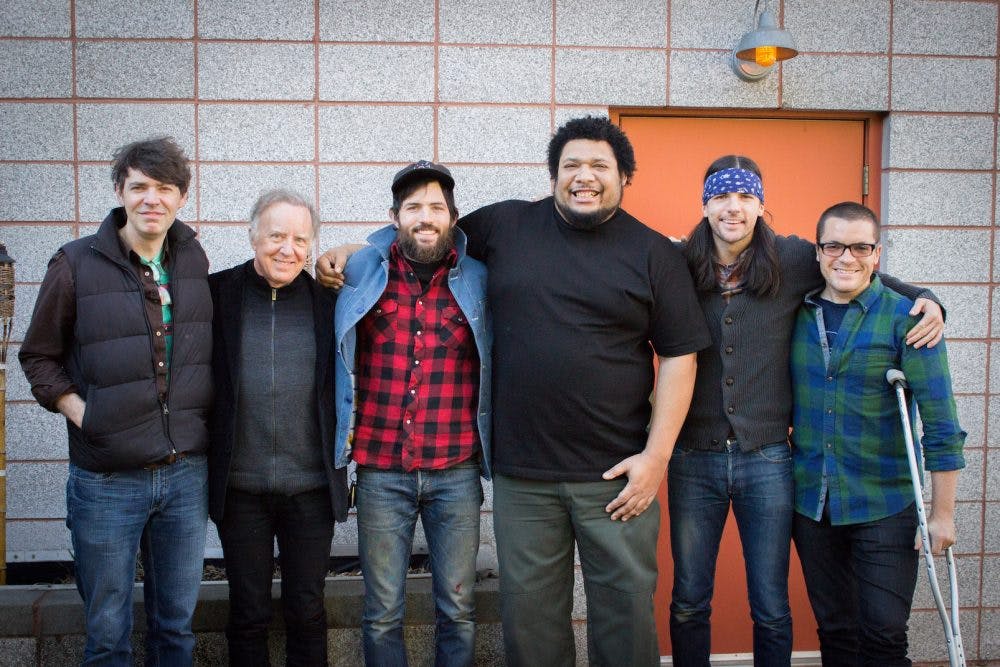
Martins Popelis: For somebody who’s just getting into music production or mixing – what would be your three key tips or advice to somebody who’s just starting out? What would you say is the key to success?
Dana Nielsen: Key to success. I do have a little mix – I call it my 5 Mix Power Tips pdf. That’s a freebie. I think it’s studiopowertips.com. I’m not sure if they would all be starting out people. One of them is don’t be snobby. It’s that kind of ethic, like don’t be afraid if you don’t have the equipment that you dream of. These days, you can do it on anything. Maybe it’s GarageBand that’s built into your computer or FL Studio. I use all of these things. I never pass judgment at gear because you can do anything with anything these days. It’s all at such a price point for anybody. It’s awesome.
Don’t be afraid. Don’t be snobby. Don’t be afraid if you can’t get the most awesome gear that you want yet.
Dana Nielsen
The other thing is – people ask me all the time, “I really am not confident about how to use an EQ or how to use a compressor or some of the tools or if I’m making this mix of this new song, and it’s cool, and it sounds cool, but I don’t know what I’m doing, so what do I do?” I’m like, “If it sounds cool, you’re doing it.” You don’t have to know all this stuff. If you can open up an EQ and twist some knobs and it makes it sound cooler, there’s your answer. That’s literally all I’m doing. It can feel super overwhelming to somebody new at it, because it is technical. There are plenty of snobs on the internet saying you can’t do this and you should only do that.
Martins Popelis: If it sounds good, it’s good.
Dana Nielsen: Sounds good, it’s good. If you think your mix sounds cool and it makes you excited, then it’s cool. That’s not to say that I can’t help you improve upon it in a way that you wish it had more of this or that. Maybe I can help you with some of that.
Use your ears. That’s all I’m doing. That’s all you need to do.
Dana Nielsen
Martins Popelis: Solid advice. Let’s talk about trends in the industry. Surround sound, spatial audio certainly seems to be picking up. How do you feel about it?
Dana Nielsen: I’m excited about that! I don’t imagine a lot of people, consumers are going to have a 10-speaker Atmos setup in their living room.
Martins Popelis: Or bedroom.
Dana Nielsen: Or bedroom. If these companies are developing new headphone technology that can simulate that, and it results in a new and thrilling way to listen to music outside of a cinematic experience, I’m all ears. I think it’s something really exciting that a lot of people are jumping on. I know labels are updating their deliverables for this type of stuff. A lot of my mixer friends are jumping on and building systems. I’ve held off a little bit on that. I’ve got my plate full with other fun endeavors.
Martins Popelis: There’s still plenty of work to do in stereo.
Dana Nielsen: I love multichannel too. I had a whole 5.1 mix setup back in 2003 and was mixing in surround. I love all of it. I’m excited about all of it. For now, in this room, I’m decidedly stereo for the moment.
Martins Popelis: Makes sense. You also said you are doing some work with artist royalties and everything. You must have an opinion about the NFTs. Is that a cool thing?
Dana Nielsen: I think it’s very promising. I wish I had my own NFT going crazy right now. I’m excited about creators in the music space using NFTs to deliver stuff right to their listeners, even on a small scale. I think that’s the thing that’s super exciting about it for now is that anybody can get into it and create something for their audience. A lot of what I’ve been working on the past couple of years is learning about building an audience and marketing and releasing records digitally, physically, this whole other side of what happens after I’m done mixing or mastering or something like that, a question to which I’ve always been like, “I don’t know.”
Martins Popelis: Somebody does something good.
Dana Nielsen: I’ll mix an album for an independent artist, and they’ll be like, “This is great. What do I do now?” I’m like, “I don’t know. I don’t know.” I really got curious about what happens next. My wife and I started a label called Neon Tusk and just have a very small roster at the moment, but it’s enough that I’m starting.
Martins Popelis: You cover all the bases from playing an instrument to monetizing the whole thing.
Dana Nielsen: That’s it, really. I’ve found an amazing community of independent musicians who are doing their best to monetize their craft. It’s such an incredible time to do that. Never before has there been easier access to the DSBs and NFTs and all the Ts and Ps. There are so many great people online. I take so many courses that I buy and learn from amazing people. Then there are so many courses that are free on YouTube and stuff. I will fall down a rabbit hole. I love it.
I see people in that DIY indie music scene using those tools, and even at a small scale, to start monetizing that stuff. Some people will use NFTs to offer a piece of the rights of that music. Other people make a very specific piece of music that’s only that NFT that they still own or whatever. Just the idea that creators of any size could monetize their music directly to the end user is pretty fascinating. I’m excited to watch streaming platforms like Audius and others that are trying to utilize that technology.
Martins Popelis: Seems there is exciting stuff happening, and we have an interesting future ahead for the world of music, right?
Dana Nielsen: Yeah, it’s really something!
